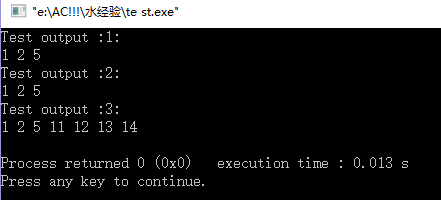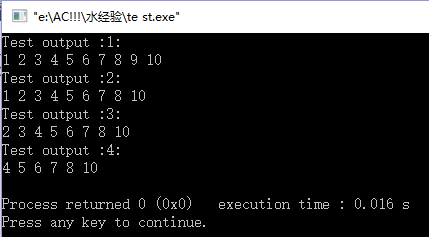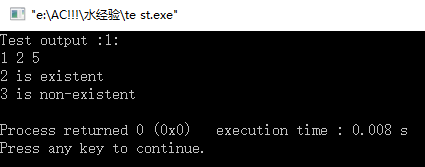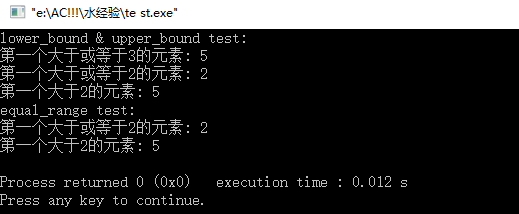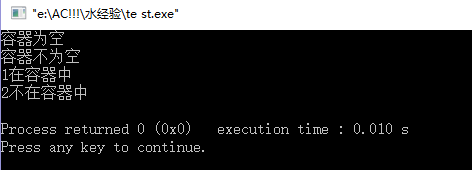C++ STL set容器常用用法
set是STL中一种标准关联容器。它底层使用平衡的搜索树——红黑树实现,插入删除操作时仅仅需要指针操作节点即可完成,不涉及到内存移动和拷贝,所以效率比较高。set,顾名思义是“集合”的意思,在set中元素都是唯一的,而且默认情况下会对元素自动进行升序排列,支持集合的交(set_intersection),差(set_difference) 并(set_union),对称差(set_symmetric_difference) 等一些集合上的操作,如果需要集合中的元素允许重复那么可以使用multiset。
1.set容器的常用操作
使用时注意包含头文件 std::set and std::multiset associative containers
s.begin() 返回set容器的第一个元素
s.end() 返回set容器的最后一个元素
s.clear() 删除set容器中的所有的元素
s.empty() 判断set容器是否为空
s.insert() 插入一个元素
s.erase() 删除一个元素
s.size() 返回当前set容器中的元素个数
set模板原型://Key为元素(键值)类型
template <class Key, class Compare=less<Key>, class Alloc=STL_DEFAULT_ALLOCATOR(Key) >2.set容器的创建
#include 的set
set<int, greater<int> > setb; //创建一个带大于比较器的set,需包含头文件functional
int a[5] = {1,2,3,4,5};
set<int > setc(a,a+5); //数组a初始化一个set;
set<int > setd(setc.begin(),setc.end()); //setc初始化一个set
//上述两例均为区间初始化
set<int > sete(setd); //拷贝构造创建set
return 0;
}
3.set容器的增删改查
①插入
#include ②删除
s.erase() 删除一个元素
s.clear() 删除set容器中的所有的元素
#include ③修改
不能直接修改容器内数据,所以只能删除某元素再插入要修改的数值。
④查找
s.find() 查找一个元素,如果容器中不存在该元素,返回值等于s.end()
#include 4.set的其他常用操作
①
s.lower_bound() 返回第一个大于或等于给定关键值的元素
s.upper_bound() 返回第一个大于给定关键值的元素
s.equal_range() 返回一对定位器,分别表示 第一个大于或等于给定关键值的元素 和 第一个大于给定关键值
的元素,这个返回值是一个pair类型,如果这一对定位器中哪个返回失败,就会等于
s.end()
#include ②判断元素是否在set中 & 判断set是否为空
#include ③自定义比较函数
#include 以上就是刷题必备的set用法,熟练掌握,要用时别用错就成。
至于求并、交、差、对称差等操作,暂不细说,使用时要包含头文件”algorithm”。
此外还有unordered_set和unordered_multiset,为set和multiset的无序版,使用时要包含头文件”unordered_set”。
